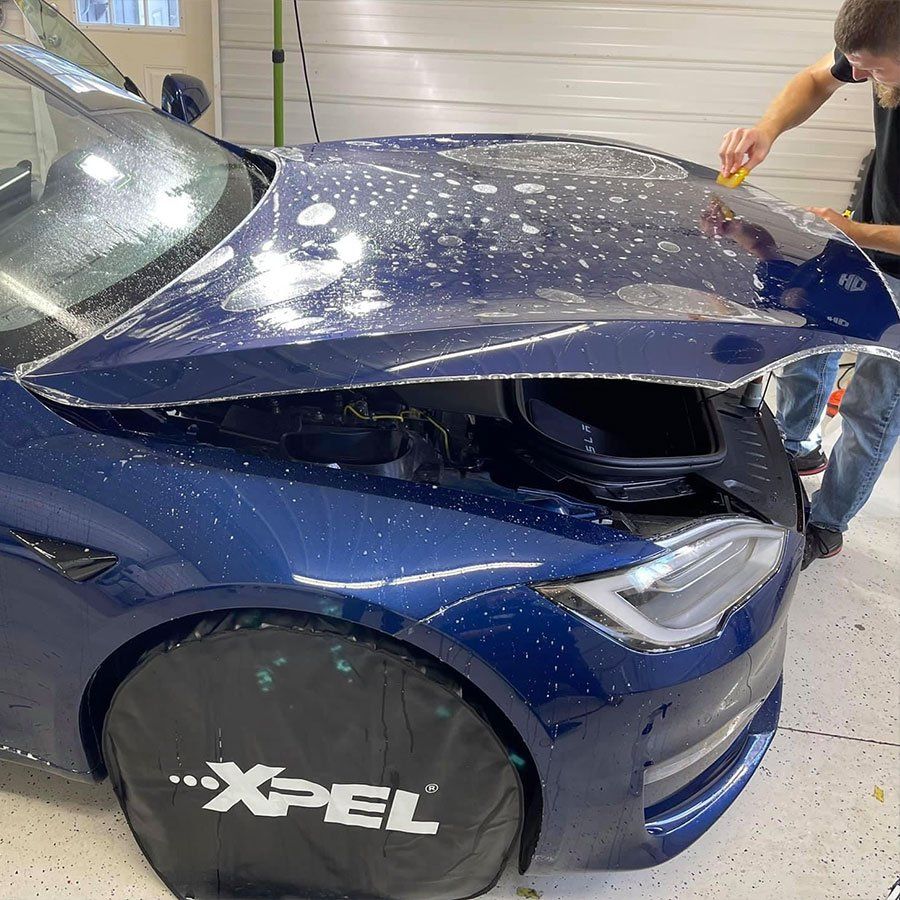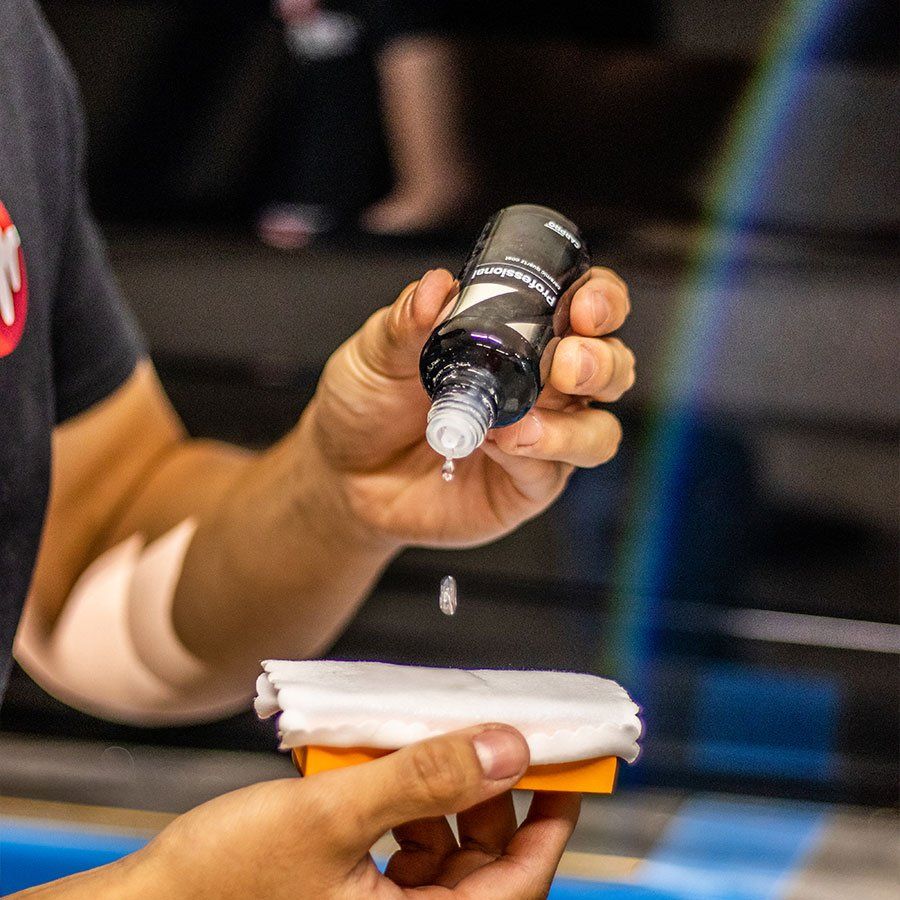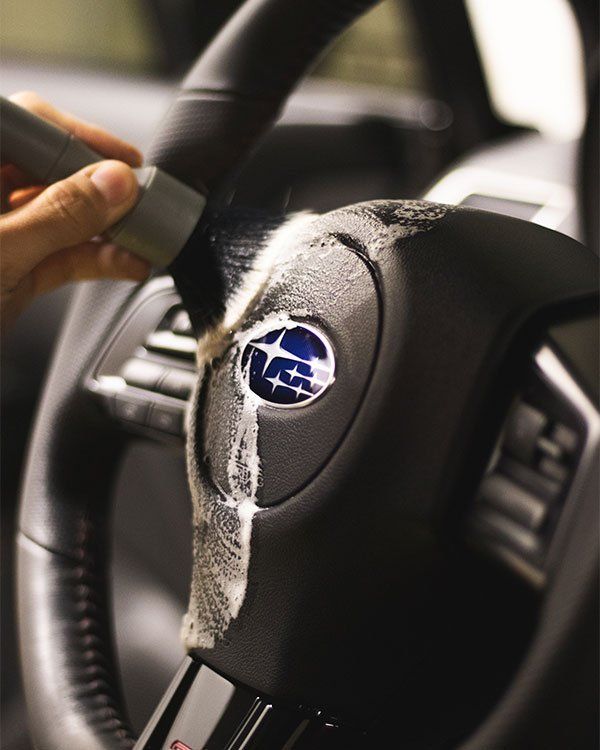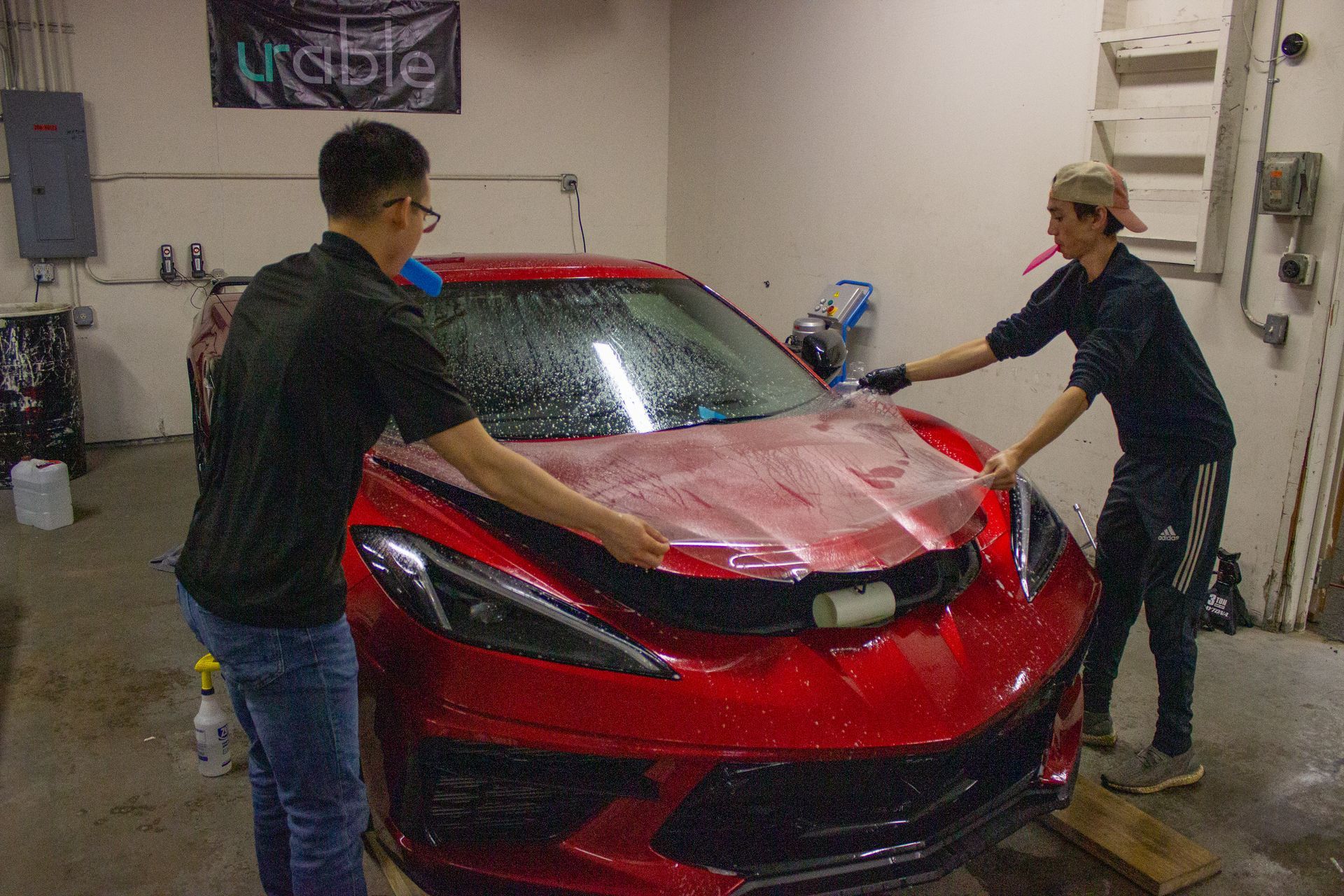When it comes to caring for your car, a ceramic coating can feel like a dream come true. It protects your vehicle from dirt, water, and UV rays while giving it that shiny, new look. However, just like any protective layer, ceramic coatings don’t last forever. If you want your car to keep turning heads, it’s crucial to know the signs that your ceramic coating is starting to wear off. In this article, we’ll explore the telltale indicators of a fading ceramic coating and share essential maintenance tips to extend its life. With a little awareness and effort, you can ensure that your ride stays looking its best. Let's dive in!
Common signs that your ceramic coating is wearing off include a noticeable loss of shine, reduced effectiveness in water beading, and an increase in visible swirls or scratches on the vehicle's surface. If you observe these indicators, it's essential to assess the condition of your coating and consider necessary maintenance or reapplication.

Top Signs Your Ceramic Coating is Wearing Off
One of the first indicators of a failing ceramic coating is the way water interacts with the surface. When freshly applied, ceramic coatings have remarkable hydrophobic properties, causing rain or cleaning water to bead up and roll off seamlessly. However, as the coating begins to wear off, you'll notice that water no longer forms those perfect beads; instead, it may start to flatten out and stick to the surface. This change is a clear sign that the protective barrier is deteriorating, allowing dirt and grime to adhere more readily, which can compromise both appearance and protection.
Visible Swirl Marks
As the protective layer thins out, swirl marks and minor scratches become more visible on your paintwork. A strong ceramic coating serves as a shield against these imperfections caused by everyday wear and tear. If you find yourself suddenly noticing these swirl marks that were once nearly invisible, it's likely a symptom of a compromised coating.
Even the lightest touch can lead to these micro-abrasions if your vehicle's surface isn't adequately protected. The presence of such marks not only diminishes your car’s aesthetic appeal but also indicates that you might need to reassess its condition.
Hard to Clean
Another red flag is how easily your vehicle cleans up after a wash. If you've observed that dirt, mud, or grime is sticking stubbornly to your car’s surface instead of gliding off as expected, then this could signal underlying issues with your ceramic coating.
A well-maintained coating makes cleaning effortless — dirt should slide off with minimal effort during routine washes. Noticeable buildup may suggest that the protective layer has worn thin, meaning you're risking further damage to the paint underneath due to reduced protection.
As you consider these factors, remember that each sign you observe increasingly points toward the need for maintenance or reapplication of your ceramic coating. It’s important not to overlook these early warnings; regular visual inspections can save you time and money in the long run by ensuring your vehicle remains in optimal condition.
Attention to these signs helps enhance not just your car's appearance but also its longevity. Engaging in proactive care allows you to enjoy the full benefits of ceramic protection while preventing future challenges down the road.
Paint Appears Dull or Faded
When you first applied your ceramic coating, you might have marveled at how it transformed your car's appearance, giving it that glossy shine that turned heads. Over time, however, if the surface starts to look lackluster and uninspiring, that’s a red flag indicating potential wear and tear on your coating. A dull or faded paint job not only diminishes your vehicle’s visual appeal but also suggests that it may be losing essential protective qualities against harsh environmental factors.
Factors Contributing to Dullness
One significant culprit behind this deterioration is oxidation. Essentially, oxidation occurs when oxygen interacts with the paint molecules over time, similar to how an apple turns brown after being cut open and exposed to air. This same process happens to car paint, especially when it's consistently exposed to direct sunlight and UV rays.
Research shows that these ultraviolet rays can break down the molecular structure of your paint much faster than you might expect, ultimately leading to fading and loss of vibrancy.
To put this into perspective, studies indicate that without regular maintenance, a ceramic coating can see its gloss level drop from a shiny 90% to below 60% in just two years!
Environmental Influences
We can't ignore the impact of our surroundings either; weather conditions play a massive role in how well your ceramic coating holds up. For example, acid rain can corrode the surface while industrial fallout—think pollution from factories—can lead to further degradation. Meanwhile, road salt used in winter months adds yet another layer of assault on your vehicle’s exterior.
Many vehicle owners might assume that frequent washes help shield their cars from these elements; however, excessive washing can hasten the erosion of the coating if proper care isn’t taken.
Consider this: depending on environmental conditions and exposure, maintaining a routine wash schedule using pH-neutral shampoos is crucial—not just any detergent will do. Neutral shampoos like Koch Chemie Nano Magic or Adam’s Graphene Shampoo help preserve your coating’s integrity by preventing harmful residue buildup while enhancing longevity.
Understanding that prolonged neglect can dramatically affect both aesthetics and protection should motivate every car owner. Striking a balance between cleanliness and care can ensure that your beloved vehicle maintains its stunning appearance for years to come, as ceramic coatings are designed to last significantly longer with consistent upkeep.

Glossy Finish is Lost
A car should radiate with a brilliant shine, its glossy finish acting as a reflection of care and attention. When you start to see a decrease in that luster, especially after consistent cleaning routines, it signals that the protective layer is diminishing. This loss of gloss can be attributed to several factors, including environmental exposure, improper cleaning methods, and the buildup of contaminants. Addressing these issues proactively can extend the life of your ceramic coating.
One evident sign of wear is when your vehicle starts to appear less reflective—this reduction can often be quantitatively measured using a gloss meter. Values below 70 GU (Gloss Units) indicate significant wear that could necessitate immediate action. On average, high-quality ceramic coatings last between 2-5 years, but neglecting regular upkeep can drastically shorten this lifespan. For instance, allowing UV rays to bombard your paint without any protection may cause up to a 20% reduction in gloss after just six months!
It’s remarkable how something as simple as frequent washing with proper products can maintain that brilliant shine. Neutral shampoos are particularly effective at promoting longevity in your coat’s appearance.
Now let's talk about what happens if gloss becomes compromised. Many car owners fail to realize that using abrasive towels or improper washing techniques can hasten the dulling process, actually scratching the surface and amplifying the problem. Switching to high-quality microfiber towels or soft sponges for cleaning is more than just a suggestion—it’s crucial for safeguarding that glossy finish.
To further enrich your vehicle's appearance, consider applying a silica sealant every three to six months, depending on your vehicle's exposure and usage context. This additional layer offers extra protection while enhancing gloss retention. Engaging with your installation shop can provide tailored insights specific to the coating applied on your vehicle, thus ensuring optimized maintenance strategies over time.
Surface Texture Changes
Keeping an eye on the texture of your car's finish can reveal a lot about the condition of your ceramic coating. Ideally, your car should have a smooth, polished surface that glides effortlessly under your fingertips. If you notice rough patches or an uneven feel, it may be time to assess whether your coating is still providing its intended protection.
Conducting a simple test is easy; just run your hand across the car's surface and observe. It should feel perfectly smooth, but if something feels off, it suggests that the protective layer has begun to wear down.
One popular technique to gauge this change is known as the “plastic bag test.” Here’s how it works: slip your hand into a plastic bag and gently rub it over the surface. This method enhances your ability to detect any irregularities because the bag acts like a magnifier for texture changes. If you feel significant graininess or bumps, this indicates that pollutants or other contaminants might be embedded in the coating, leading to deterioration. Performing this test every month or after washing your vehicle can provide insightful information on whether you need to reassess your maintenance routine.
Detecting Surface Roughness
Over time, contaminants like bird droppings, tree sap, industrial fallout, and road grime can wreak havoc on your ceramic coating. They not only create an ugly appearance but also embed themselves into the coating, causing it to degrade faster than normal. This is why prompt and effective cleaning is essential; neglecting routine maintenance can lead to long-term damage.
The best way to prevent these nuisances from affecting the integrity of your finish is through regular decontamination with specialized cleaners designed for ceramic coatings. Using a pH-neutral shampoo paired with a clay bar treatment can effectively remove stubborn contaminants while preserving the coating’s protective properties.
Moreover, statistics show that car owners who engage in consistent maintenance report fewer texture changes over time compared to those who overlook care. Specifically, 60% of users who maintain their cars regularly noted longer-lasting smoothness and less degradation in texture quality.
By being aware of these signs and conducting simple tests, you empower yourself to give your vehicle the proper care it deserves. Regular maintenance enhances its aesthetic appeal while also playing a crucial role in extending the lifespan of that precious ceramic coating.
How to Restore Worn Coatings
Once you’ve recognized that the protective layer of your ceramic coating is on its last legs, it's time to take action. Restoration might seem daunting, but it can be quite manageable with a few straightforward steps.
The first approach is often light polishing, which can effectively refresh your vehicle's exterior. This process removes the old, worn-down layers without damaging the underlying paint.
When selecting a polishing compound, it’s vital to choose non-abrasive options, as abrasive compounds could inadvertently scratch or mar your car's finish.
Reapplication of Coatings
After you have polished the surface, ensuring it's perfectly clean becomes paramount before applying any new ceramic coating. A clean surface allows for optimal adhesion and effectiveness of the new product.
I recommend using a strong automotive degreaser to remove any residual polish, oils, or contaminants. Some reputable ceramic coating products worthy of consideration include CQuartz UK 3.0 or Gtechniq Crystal Serum Light. Both are well regarded in the detailing community for providing long-lasting protection while enhancing gloss.
Professional Assistance
For best results, consider seeking out professional detailing services for the application of your new coating. Professionals have experience and techniques that ensure the coating bonds correctly with the surface, avoiding pitfalls that can occur during DIY applications.
There's anecdotal evidence from many automotive enthusiasts suggesting that professional applications yield longer-lasting results compared to individual attempts. Often, the investment made in professional services pays off by significantly extending the lifespan of the protective layer.
By following these restoration steps—polishing, reapplying a high-quality coating, and possibly enlisting professional help—your vehicle can regain its original shine and protection against environmental hazards.
For more details and valuable products tailored for your car care needs, visit us at The Detail Doc. If you have questions or need assistance, don't hesitate to call us at (937) 361-7993.








